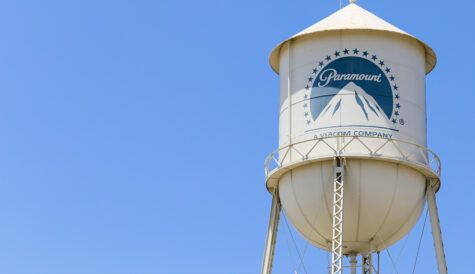
After more than 40 years of operation, DTVE is closing its doors and our website will no longer be updated daily. Thank you for all of your support.
Sustainability: attribution or consequence?
 For those of you just joining us, this is episode two of a series of articles looking at sustainability in our industry.
For those of you just joining us, this is episode two of a series of articles looking at sustainability in our industry.
Episode 1 introduced Greening of Streaming and gave some scene-setting context touching on the high-level issues and the ‘neither tree hugger nor climate change denier’ positioning of the organisation.
The key takeaway should hopefully be that one of the most pragmatic, yet effective, ways for our industry to contribute to sustainability efforts is to focus on reducing energy consumption.
That’s because ‘carbon reduction’ is a vague concept: Engineers can’t engineer less carbon in an environment that simply doesn’t have actionable units of carbon data. It’s comparable to trying to reduce data storage using units of bananas.
Of course there are carbon calculators aplenty, which purport to help this translation, but they are universally based on guesswork when it comes to our sector. There are almost no real-world measurements: Most of the numbers you will hear are based on lab tests which have been extrapolated to a conjecture of what that lab model might look like when scaled out to a consumer market size. Naturally this type of guesswork is nigh-on useless for engineers who can only operate against ‘actionable data’.
Pinch of salt
In particular, cloud carbon calculators should be taken with a pinch of salt. The clouds have tried to answer questions about carbon consumption, but their estimates are ridiculously out of line with each other and even with the views of their suppliers. Increasingly we see the clouds turning their own internal strategy from one of ‘find an answer about our sustainability for the end user’ to one of ‘use greenhouse gas scopes to disown the problem by passing the responsibility on to our supply chain’. So the business of trying to make industry actors accountable has become a gameable activity – much like carbon offsetting.
The fundamental model by which carbon accounting is evaluated conflates two underlying models: attributional lifecycle assessment and consequential lifecycle assessment. Both models use the same measures and the same language, but they are orthogonal to each other in effect. This means we find many conversations at cross purposes.
To explain the problem with a simple example:
- I used to drive a car five days a week to work. Now I work from home three days a week, so I have reduced my petrol consumption by two fifths. There was an actual decrease in carbon production. This is consequential lifecycle analysis.
- I used to take the bus to work five days a week. Now I work from home three days a week so I am no longer using the bus two days a week, so the attribution of the bus’s petrol/carbon is no longer attributed to me for those three days a week. This is attributional life cycle analysis.
Obviously, attributional models reduce the guilt I feel for being involved in carbon production. However the bus still runs. If all 72 regular users stop using the bus, the bus company eventually may reduce the bus service, but in practice what is most likely to happen is that the bus will run half-full, and the attribution of carbon of those remaining on the bus will increase, but the actual amount of carbon produced/fuel consumed will remain pretty constant regardless of the change in behaviour.
Everyone feels less guilty but nothing has changed as far as environmental impact is concerned. It would only make a difference if a no-longer-used bus route is cancelled. But in practice that may have the unintended consequence of forcing occasional users into individual cars, resulting in an increase of carbon emissions.
Shared infrastructure

Source: AdobeStock
Moving focus back to media, as we moved to an Internet/IP dominated technical services model, much of the infrastructure is shared. Attribution, at first, looks like a logical way to point ‘responsibility’ for that infrastructure’s carbon footprint toward those using the infrastructure. But it is important to realise that using less of the infrastructure doesn’t reduce the footprint unless the infrastructure is removed/turned off/recycled when it is not being used. Our infrastructure is inelastic and is not scaled with use – it is scaled with anticipated-use. It is the ‘bus’ model above, not the car model.
In Greening of Streaming we are focussed on consequential models. We want to deliver the same (or even better) streaming scale and quality while actually reducing the energy. We have three working groups focusing on developing real-time, real-world measurements with the aim of providing actionable data, meaning that operators will, over time, be able to distribute workloads using energy as a KPI. We go even further and have a working group specifically promoting ‘Energy as a KPI’ to our peer industry associations, to ensure that protocol/service/application development is carried out with that KPI as a first-class design principle, rather than an afterthought that is retrofit to the technology.
Attribution models are relatively easy to conjecture. A classic example has been to divide the energy consumption of a network by the bandwidth per user. This leads to the assumption that reducing data (streaming at lower bitrates) reduces the individual attribution, which then leads some organisations to claim they are greener. They are not. The telco is still consuming the same amount of energy. The consequence of reducing bandwidth is to reduce user guilt, but it changes nothing about the energy consumption of the telco nor the carbon emissions resulting from that consumption.
Carbon calculators are almost exclusively attributional. This makes them extremely misleading when one is trying to reduce environmental impacts.
Fundamental flaw
A big issue is when consequential and attributional models conflate and are inadvertently discussed at cross purposes. Even in Greening of Streaming’s own communications it has taken several years to realise that there are actually two models, not one, and that many attempts to make consequential differences turned out really to be merely attributional.
This is an endemic problem, particularly for an industry like ours which is new to the sustainability challenge and trying to learn ‘sustainability lexicon’ and incorporate those ideas rapidly.
No one likes to be told that their methods are wrong, or that their claims of being ‘green’ are fundamentally flawed, but it’s crucial that any such claims are based on accurate data. We know these are difficult challenges, and our goal isn’t to beat anyone up for bad estimations and failed models.
Still, incorrect models need to be iterated and improved. It is also important to keep sight of the fact that most ‘greenwashing’ is still fundamentally underpinned by the idea of taking on a ‘noble cause’. Just because the first attempts to take on the challenge fail, or are disputed, doesn’t necessarily mean that those involved are bad actors with nefarious intentions. Science is a process of continually reducing failures until we can confidently predict the future. Getting it ‘wrong’ is an essential part of getting it ‘right’.
So for the next episode, I will start a deep dive into each of our working groups, talking with each group lead about the challenges they are focussing on.
For now I want to leave you with a key thought that you should be able to consider much more deeply than you could before you read this article.
A key EU regulator meeting with broadcasters recently was recounted to me privately by one of the attendees. I won’t name names so as not to violate confidence, but ‘a major EU broadcaster’ made the vaguely horrific and certainly naïve claim that the fault was not theirs – it was the consumers’ fault. Consumers demand the service. Consumers plug their TVs and setup boxes in, and thus the fault is the consumers’ and not theirs.
Oil companies use the same excuse not to invest in alternative energy: because consumers want to drive cars and use petrol, we pump it. Why invest in alternative solutions when we can become rich from selling consumers what they want?
This is precisely why we need regulators.
I hope the outcome of that meeting will be a regulatory punchback, pointing out that the broadcaster drives the load on the devices and defines the tech stack that actually consumes the energy. It is up to them to make choices that scale efficiently, since the consumer certainly has no idea, choice, or input in the matter. The consumer’s only option is not to engage. There is no opportunity for the consumer to engineer better. If it is anyone’s responsibility to drive technology change, it is that of the broadcaster.
Any deflection of that responsibility is whimsical, naïve, and pathetic.
Take on the problems, enjoy the challenges, and take responsibility for making a difference. Be engineers.
Dom Robinson is the founder of Greening of Streaming and chief business development officer of id3as.


